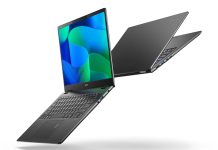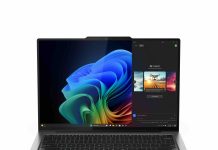The variety of midrange smartphones is increasing in recent months. No longer do you need to pay top dollar for the best smartphones. In fact, you get more value from a midrange model. In this article, NXT gathers three of the most popular midrange smartphones and puts them under the limelight. We were also fortunate enough to get our hands on the latest Huawei Nova 5T and pitted it against the other three incumbents.
Google Pixel 3a
The Google Pixel 3a is the dream phone for fervent Android supporters on a budget. With updates from Google itself, owners are assured of a phone that delivers the fastest Android updates. At one glance, it would be hard to tell the Pixel 3a from the Pixel 3, as the external design is identical. Even though the material that the back is made from has been changed from glass to plastic, it still feels pretty similar. While glass is a more premium material, plastic is certainly more durable.
![]()
As it takes after the Pixel 3 series in 2018, the Pixel 3a has only a single front camera with conventional bezels all around – A far cry from the rest of the smartphones in this roundup. Running on Qualcomm Snapdragon 670, the Pixel 3a does not perform as speedily but the camera quality is similar to the premium variant. The stereo speakers deliver clear and wide sound, and you get a bonus 3.5mm audio jack which gets rarer by the day. Most importantly, the intelligent OS monitors your smartphone usage and improves your experience accordingly. It even recognises the songs playing near you automatically.
The Google Pixel 3a is an underdog amongst the midrange phones with its signature design and unique Google experience, appealing to consumers looking for simplicity that works.
Huawei Nova 5T
The newest kid on the block, the Nova series received much positive attention thanks to Huawei’s immensely successful flagship series. The Nova 5T sports a revamped logo design and borrows design elements from the earlier P-series. The sides and edges are rounded, giving a more comfortable hold. With a 4-camera system at the rear, the Nova 5T has the most number of lenses amongst the smartphones in this roundup, and delivers a wide range of shooting possibilities from the 1/2-inch 48-megapixel main camera to the 26-megapixel ultra wide angle and a dedicated super macro that shoots as close as 4cm. The front camera is located in the top left corner, right underneath the display, which makes it almost unnoticeable especially when watching video or playing games as it gets tucked away at the bottom corner while in landscape orientation.

The Nova 5T also runs on Kirin 980, the same flagship processor as the P30 series, and even tops the roundup with 8GB RAM. All of this makes the Nova 5T an attractive proposition. There was no under-display fingerprint sensor, but the side-mounted fingerprint sensor feels more natural (and quicker) to unlock the device. For wireless earphone owners, the Nova 5T supports all the popular codices like SBC, AAC, aptX, aptX HD, LDAC and HWA.
OPPO Reno
The OPPO Reno distances itself from the competition with its shiny glass-back design and unique design elements. The matt-blasting back-finishing draws attention to a glossy detailing in the middle which aligns with the two rear cameras. Another outstanding design is the pop-up camera that pivots at an angle, providing strength for its protrusion. The ColorOS 6 is a brand new visual design which appears more colourful, spacious, and clean, with large notification bar icons.

The camera app has only a handful of shooting modes, somewhat embarrassingly few compared to the others in this roundup. The overall image quality, including low-light night shots, are less processed but it goes wild to beautify detected faces. Indeed, this standard model is overshadowed by the premium Reno 10x Zoom variant.
Samsung Galaxy A80
Among the smartphones compared in this test, the Galaxy A80 has the largest display but also has the heaviest and bulkiest design, no thanks to the elaborate pop-up camera mechanism that is distractingly noisy. Instead of a separate front camera, the A80 uses the same rear camera module and flips it to the front for selfies. With that, the A80 technically has a superior selfie camera as it offers both standard and ultra-wide angle shooting. Sadly, the camera modes are fewer than the rear camera mode, thus limiting its imaging capabilities.

Looking beyond the physique, the Galaxy A80 offers a similar UI experience as the premium Galaxy models, like Bixby routines, Samsung Knox, Samsung Pay, on-screen fingerprint, super fast charging, as well as a generous 8GB RAM. While the apps generally run smoothly, the animation transition is a little slow, giving the impression of a sluggish phone. This is a shame because its benchmarks are some of the highest amongst the group. As it turns out, the Galaxy A80 is also the highest in terms of retail price.
Comparison Results
|
Phones |
Google Pixel 3a |
Huawei Nova 5T |
OPPO Reno |
Samsung Galaxy A80 |
|
Design |
3.5 | 4 | 4.5 | 4 |
|
Performance |
4 | 4 | 4 | 4 |
|
Display |
4 | 4 | 4 | 4 |
|
Camera Features and Quality |
4 | 4 | 4 | 4 |
|
Feature List |
3.5 | 4 | 3.5 | 4 |
|
Price Value |
4 | 4.5 | 3.5 | 3.5 |
|
Score |
23 | 24.5 | 23.5 | 23.5 |
Test Winner: Huawei Nova 5T
It is a challenge to put out a comparison of the smartphones, because each of them has their strengths and unique features that would cater to their respective target groups. The . Google Pixel 3a is a hit with pure Android fans with reliable software update support, the OPPO Reno delivers fairy tale-like portrait processing, and the Samsung Galaxy A80 gets you ultra-wide angle selfies and features that are comparable to their more expensive flagship models.
But the winner goes to the all-rounder Huawei Nova 5T. It comes with Huawei’s flagship processor, and achieves the highest overall benchmark score, yet is still priced the lowest amongst the smartphones compared. Even though we spent the least time with it, the we were quickly impressed by the Nova 5T and found that it was easy to get the hang of. The camera quality is respectably detailed, albeit not as aggressively processed as the Galaxy A80 and OPPO Reno. It is an excellent balance of price, design and features, a successful formula that eludes most competitors.
The Google Pixel 3a is available at $659
![]()
Technical Specifications
- Processor Snapdragon 670
- Operating System Android 9.0 Pie
- Display 5.6-inch 2220 x 1080 OLED
- Memory 4GB LPDDR4x RAM, 64GB
- Rear Camera 12.2 MP dual pixel f/1.8
- Front Camera 8 MP f/2.0
- Connectivity Wi-Fi a/b/g/n/ac 2×2 MIMO, Bluetooth 5.0, USB Type-C, NFC, 3.5mm
- Battery 3000mAh
- Dimensions 151.3 x 70.1 x 8.2 mm
- Weight 147g
The Huawei Nova 5T is available at $598
Pre-orders made from 6 to 12 Sep will receive a free pair of Huawei FreeBuds Lite worth $188. While stocks last.

Technical Specifications
- Processor Kirin 980 Octa-core, Mali-G76
- Display 6.26-inch FHD+ 2340 x 1080 TFT LCD
- Memory 8GB RAM, 128GB ROM
- Rear Camera Ultra Wide: 16MP f/2.2, Wide: 48MP f/1.8, Macro: 2MP f/2.4, Depth: 2MP f/2.4
- Front Camera 32MP f/2.0
- Operating System EMUI 9.1 based on Android 9
- Connectivity Wi-Fi 802.11 a/b/g/n/ac (wave2), Bluetooth 5.0, USB Type-C, NFC
- Battery 3750 mAh
- Dimensions 154.25 x 73.97 x 7.87mm
- Weight 174g
The OPPO Reno is available at $849

Technical Specifications
- Processor Snapdragon 710
- Display 6.4-inch 2340 x 1080 AMOLED
- Memory 8GB RAM, 256GB
- Rear Camera 48MP f/1.7 + 5MP f/2.4
- Front Camera 16MP f/2.0
- Operating System ColorOS 6 based on Android 9
- Connectivity Wi-Fi, Bluetooth 5.0, USB Type-C, NFC
- Battery 3765 mAh
- Dimensions 156.6. x 74.3 x 9 mm
- Weight 185g
The Samsung Galaxy A80 is available at $898

Technical Specifications
- Processor Octa-core processor 2.2GHz + 1.8GHz
- Display 6.7-inch FHD+ Super AMOLED
- Memory 8GB RAM, 128GB Internal Storage
- Rear Camera Wide: 48MP f/2.0, Ultra Wide: 8MP f/2.2, 3D Depth: HQVGA
- Front Camera None
- Operating System Android 9.0 Pie
- Connectivity Wi-Fi 802.11 a/b/g/n/ac, Bluetooth 5.0, USB Type-C, NFC
- Battery 3700 mAh
- Dimensions 165.2. x 76.5 x 9.3mm
- Weight 220g








![How the Canon iNSPIC [S] Completed my Community Service Trip Vanessa bringing the Canon iNSPIC [S] for her community service trip](https://nxtmag.tech/wp-content/uploads/2019/07/vanessa-canon-inspic-1-100x70.jpg)



